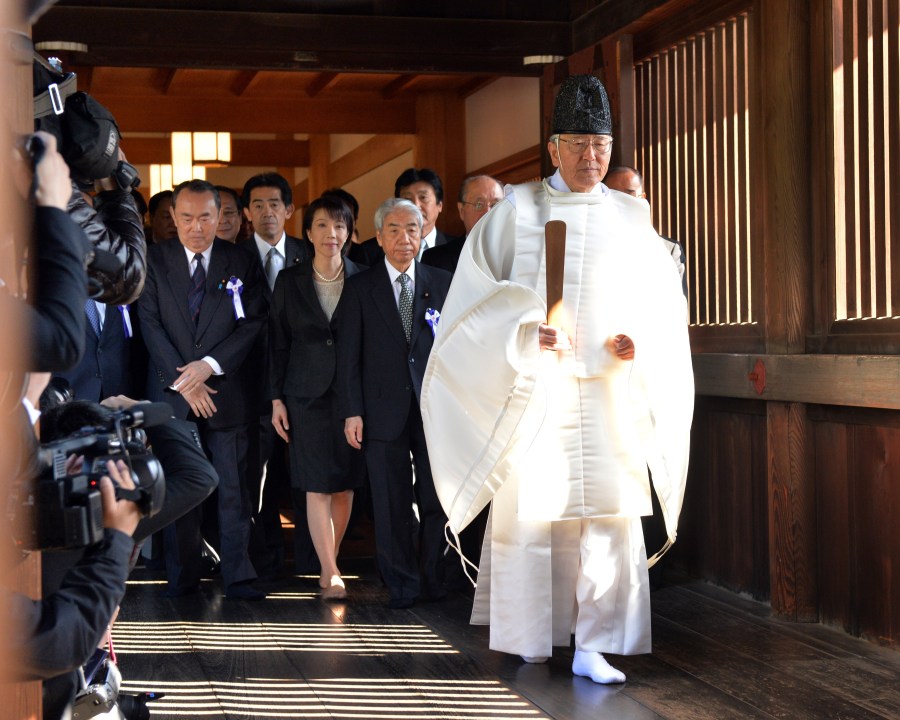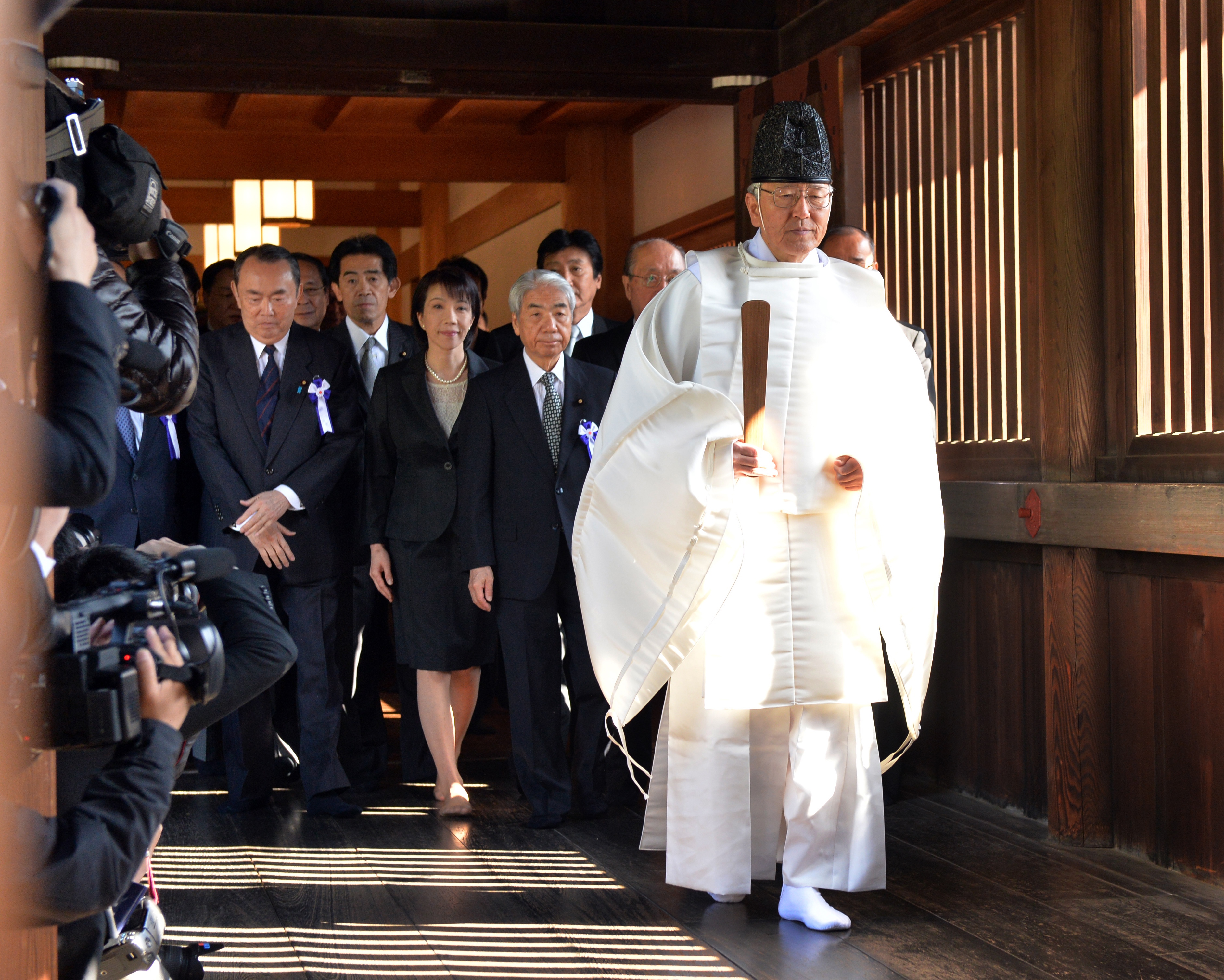This may look like just a photo of rather boring-looking suits being led by a placid Eastern monk through some Asian temple, but it’s created a furore in South Korea and China.
The picture shows Japanese lawmakers visiting the controversial Yasukuni Shrine in Tokyo, which deifies people who have died for the Empire of Japan, including 14 convicted Class A war criminals (among them the ex-prime minster who was directly responsible for Pearl Harbour). The shrine owns a museum that may politely be called ‘revisionist’, displaying Imperial Army memorabilia ranging from military badges to suicide torpedoes. It’s not uncommon to see men, and sometimes toddlers, dressed in World War 2 uniform marching outside.
This morning, a record 168 Japanese lawmakers of all political stripes visited the shrine, after two members of Prime Minister Shinzo Abe’s Cabinet visited on Sunday, and Abe himself sent a ritual offering. Needless to say, this has infuriated Japan’s wartime foes South Korea and China. Seoul cancelled a proposed visit by its foreign minister to Tokyo, while China has riled about Japan’s ‘negative behaviour’. Beijing has also sent eight government ships near the East China Sea islands that both nations claim.
It all shows that while North Korea’s verbal pyrotechnics and nuclear threats may be the most riveting flashpoint in Asia, it is not the deepest or even the most dangerous. Indeed, Kim Jong-un’s sabre-rattling — today he rejected US conditions for talks — may be diverting attention from the militarisation that’s going on all over the entire region. From Japan to Malaysia to the Philippines, Eastern nations are buying arms at a spectacular rate. Latest figures show that for the first time, Asia’s military spending is now greater than Europe’s.
Abe heads an ultra-nationalist government, but Japan’s new patriotism was not born in a vacuum. It is a reaction to China’s surging influence, and to Beijing’s bellicose rhetoric and navy manoeuvres over the disputed islands.
The rise of China has forced its smaller neighbours to realign their loyalties and look for protectors, while making sure they’ve got enough war kit to defend themselves — just in case. After four decades of near-miraculous financial progress, Asian nations can afford more than the odd fighter jet. And their newfound wealth has fostered a hyper-competitive environment that often spills over from the economic to the political to the military.
This is all the more so because Asia has not tried to resolve its past conflicts the way Europe has. The wounds, as can be seen from the whole Yasukuni row, are still festering and contributing to today’s jostling for power.
You can read more about the Asian arms race in my recent cover story for the Spectator here.
UPDATE: China is building its second aircraft carrier.







Comments